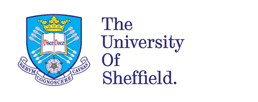
Anthony O'Hagan and Maurice Cox
School of Mathematics and Statistics, University of Sheffield, UK and National Physical Laboratory, Teddington, UK
Publication details: Submitted to Metrologia, 2022.
The result of a measurement, including the expression of uncertainty in the measurement, should represent a carefully considered opinion based on the metrologist's experience and expertise, as well as on the data and other information sources. This is the position of the Guide to the expression of uncertainty in measurement (GUM), and the requirement for such judgement is clear in the case of Type B (non-statistical) evaluation. However, when making Type A evaluations, involving statistical analysis of data, the GUM and its various supplements implicitly consider the data to be the only relevant information. This is unfortunate, and arguably unscientific, when, as is frequently the case, the metrologist could bring other relevant information to bear.
Bayesian statistical methods allow the use of prior information in addition to the data in Type A evaluation and have been advocated by several authors. However, prior information is in principle subjective and, as in other fields, there is some resistance in the metrology community at large to embrace Bayesian methods using substantive, subjective prior probability distributions.
We address our paper to metrologists in measurement and calibration laboratories whose workload is such that new techniques will only be adopted if they have proven advantages and are straightforward to apply routinely. We present two prior distributions for use in the most basic of all Type A evaluations, where the data comprise a sample of indications assumed to be normally distributed. They represent prior information about the variance of the normal errors, in a simple form that is readily justified in practice. We show the gains to be achieved by using these prior distributions, both in the single Type A evaluation and in a more complex measurement model, and present simple guidance for verifying their validity.